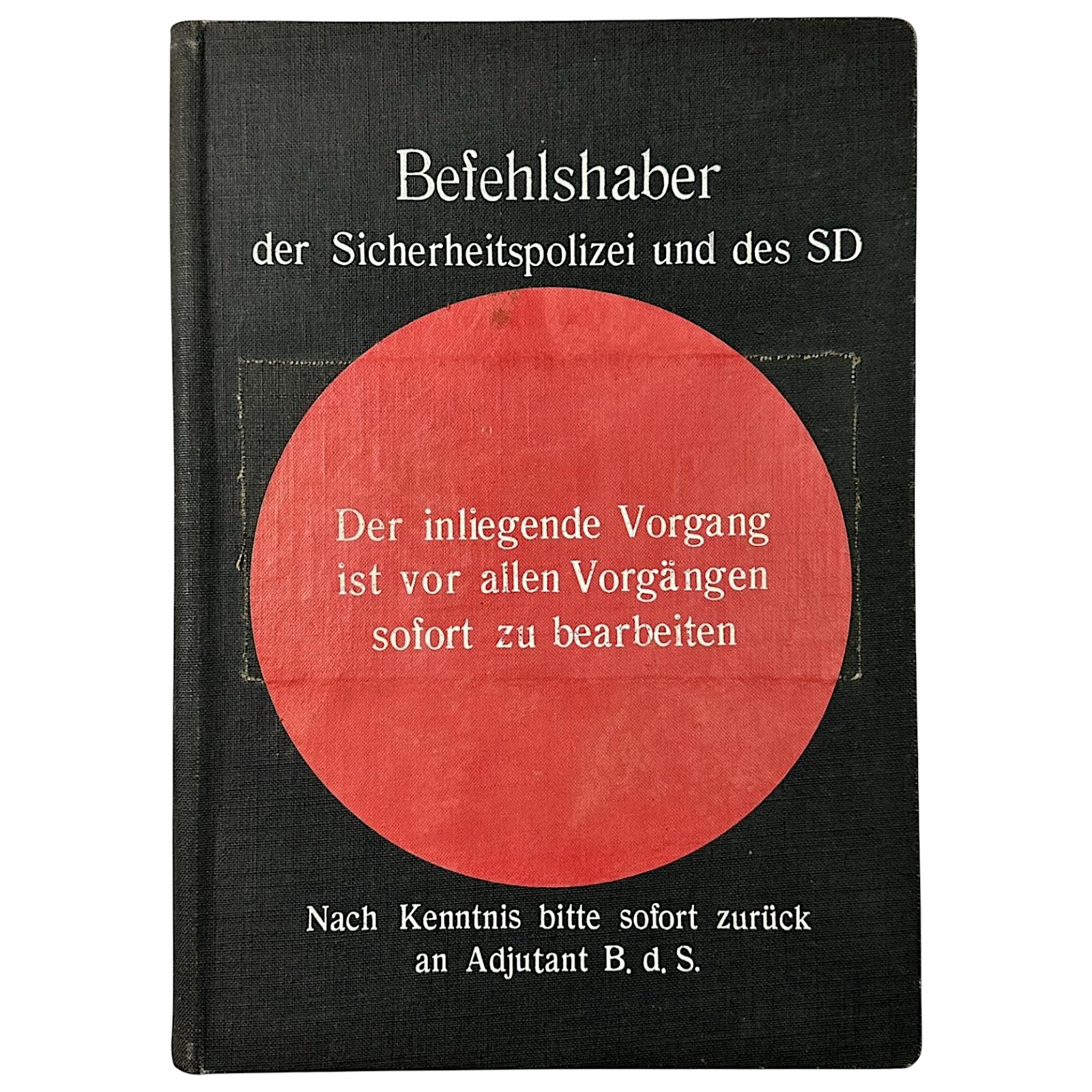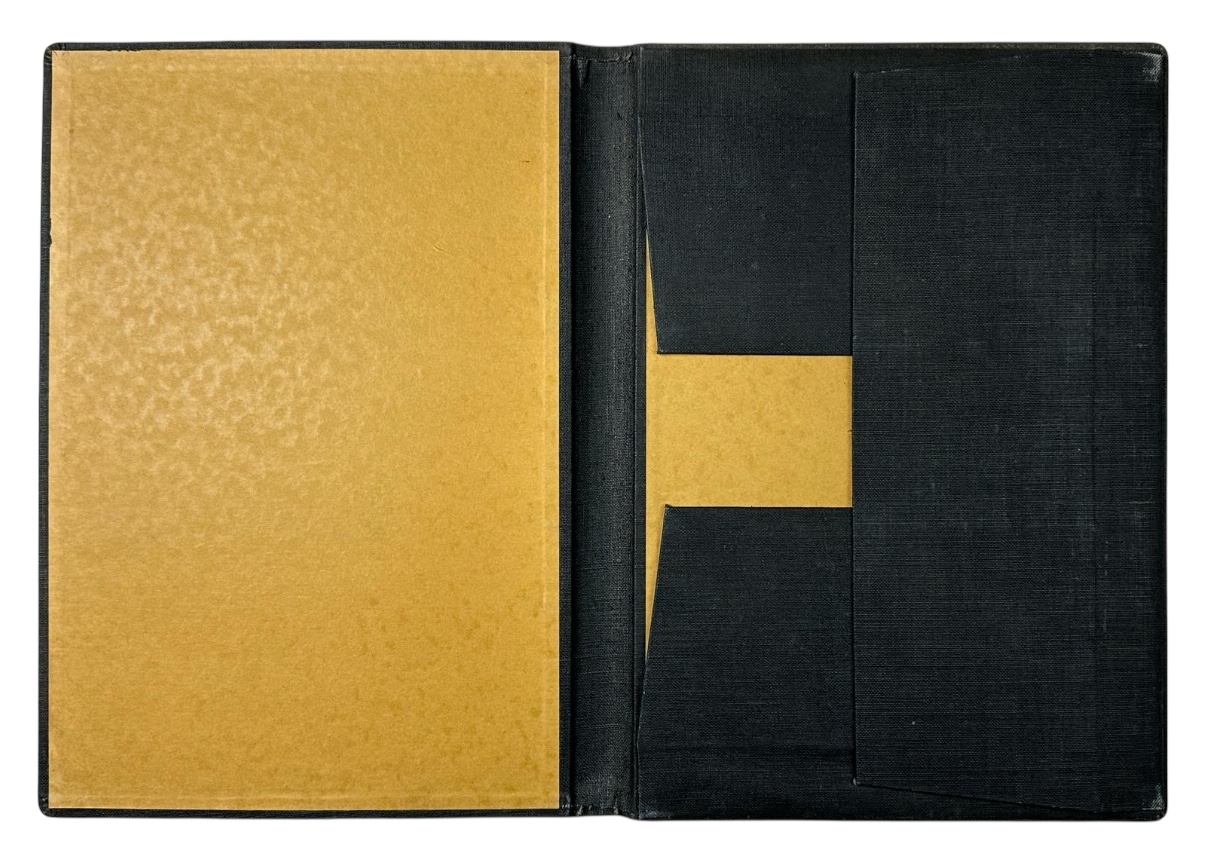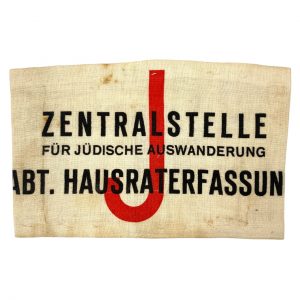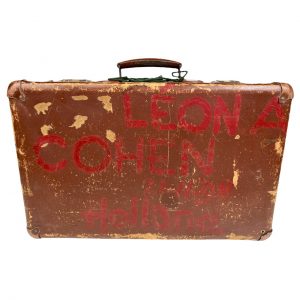Den Haag – Service Folder of Karl Eberhard Schöngarth – Sicherheitsdienst (SD) Headquarters
This service folder originates from the headquarters of the Sicherheitsdienst (SD) in The Hague, where the highest SS and police authority in occupied Netherlands was located.
The folder belonged to Karl Eberhard Schöngarth, a notorious high-ranking SS officer and commander of the Sicherheitspolizei and SD in the Netherlands during the Second World War.
Cover inscription:
“Befehlshaber der Sicherheitspolizei und des SD – Der inliegende Vorgang ist vor allen Vorgängen sofort zu bearbeiten – Nach Kenntnis bitte sofort zurück an Adjutant B. d. S.”
Translation:
“Commander of the Security Police and the SD – The enclosed matter is to be processed with priority over all other matters – After review, please return immediately to the adjutant of the Commander.”
The folder was intended for repeated internal use in the circulation of urgent, high-priority cases.
As head of the Sicherheitspolizei and SD in the Netherlands, Schöngarth was responsible for numerous persecutions, deportations, and executions of resistance members and Jews. He led a terror apparatus from the SD headquarters in The Hague.
This folder, bearing his official designation and marked for urgency, offers a rare and tangible glimpse into the bureaucratic structure of Nazi repression in the Netherlands.
It would typically contain direct orders and instructions issued by or passed down from senior Nazi officials such as Dr. Arthur Seyss-Inquart and Hanns Albin Rauter.
Karl Eberhard Schöngarth
Karl Eberhard Schöngarth was a high-ranking SS officer and legal scholar within the Nazi regime. He was born on April 22, 1903, in Leipzig, and served in the Sicherheitsdienst (SD) and the Sicherheitspolizei (SiPo).
During the Second World War, he played a central role in carrying out Nazi terror policies in occupied territories, including Poland and the Netherlands.
In 1941, Schöngarth was involved with the Einsatzgruppen, mobile killing units responsible for the mass murder of Jews, intellectuals, and political opponents in occupied Poland.
He was later appointed head of the SD and SiPo in the Netherlands, where he directed the suppression of the resistance, raids, deportations, and brutal interrogations.
After the war, he was captured by the Allies and tried by a British military tribunal.
He was found guilty of war crimes, including the execution of an American pilot, and was executed by hanging on May 16, 1946, in Hamelin, Germany.





